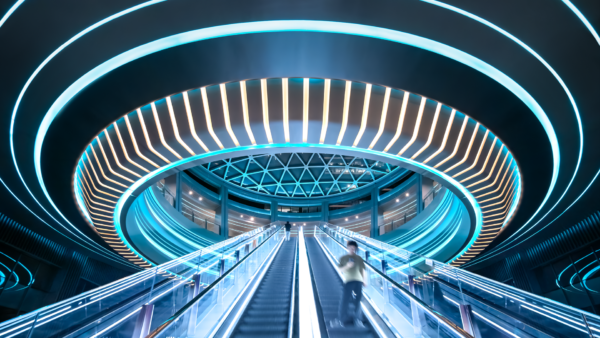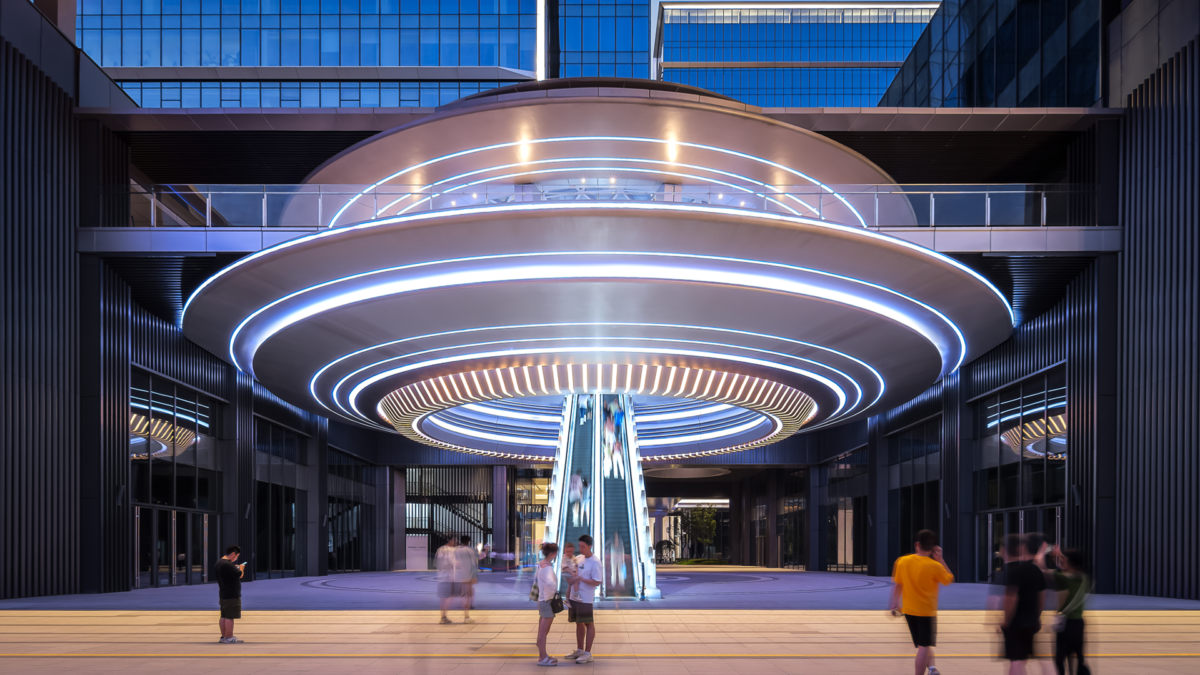Yejia Zhu at CADE 2025: Designing the Ali-Hub at Nanjing Alibaba Centre
When a 37-metre stainless-steel disc draws curious visitors with cameras, the questions shift from “can it be built?” to “how was it built and why?”
At Façade LAB20 during the CADE Architectural Design Expo 2025 in Shanghai, Yejia Zhu, Project Director at Benoy, unpacked the design story behind one of the year’s most distinctive buildings: the Ali-Hub (UFO) at Nanjing Alibaba Centre. Speaking to more than 50 design firms, façade consultants, and industry specialists, Yejia explored how the team balanced sculptural ambition with the practical demands of energy performance, structural integrity, and human comfort.
The challenge: seamless complexity
The Ali-Hub serves as both a visual attraction and the functional core of the nearly 900,000 sqm Nanjing Alibaba Centre. Conceived as the development’s central transportation hub, the building needed to handle high volumes of daily movement while creating a memorable arrival experience. Designed as a hovering UFO-inspired disc, the Ali-Hub has proven popular with visitors since opening, becoming a destination for photographs and public events.
But translating that vision into reality meant solving a significant technical puzzle. The building’s long-span curved geometry created construction challenges that conventional façade systems couldn’t accommodate. “We needed absolute precision across every panel to maintain the seamless quality of the form,” Yejia explained. “Even minor deviations in curvature or jointing would have disrupted the purity of the disc.” Working closely with façade consultants, the team developed a customised system using parametric modelling to control each panel’s curvature, dimensions, and connection details.
Performance beyond form
While the Ali-Hub’s visual impact is immediate, its environmental performance operates quietly in the background. The façade integrates low-emissivity glazing with an intelligent shading system that responds to solar conditions throughout the day, reducing heat gain and energy consumption. These measures contribute to the broader campus targets: annual energy savings of 4.13 million kWh and a 40% reduction in operational carbon emissions compared with baseline standards.
For Yejia, this integration of performance and aesthetics reflects a fundamental design principle. “Sustainability isn’t an add-on; it’s embedded in the earliest design decisions. The façade’s geometry, material selection, and glazing strategy all work together to deliver both visual clarity and energy efficiency.”
Designing for people
Beyond technical and environmental performance, Yejia emphasised the importance of occupant experience. Decisions around light transmission, interior shading, and visual transparency directly influence comfort and usability in the workplaces and public spaces within the Ali-Hub.
“Architecture exists for the people who use it every day,” Yejia noted. “Our goal was to create spaces where natural light supports wellbeing without causing glare or overheating, where the façade enhances the interior experience rather than competing with it.”
This human-centred approach aligns closely with this year’s CADE theme: “Co-Create, Co-Habit, Co-Share” — a framework that positions architecture as a collaborative endeavour between designers, clients, and communities.
Looking ahead
Façade LAB20, curated by Yu Hui, Director of RFR Asia, has become a leading platform for exploring innovation in façade design. By bringing together designers, consultants, developers, and material suppliers, the exhibition creates space for cross-industry dialogue that pushes technical boundaries while keeping human experience at the centre.
For Benoy, the invitation to present at CADE 2025 reflects the firm’s ongoing commitment to advancing façade innovation across large-scale mixed-use projects. As cities continue to densify, projects like the Ali-Hub demonstrate that technical complexity and human comfort aren’t competing priorities; they’re design objectives that define the next generation of urban landmarks.







